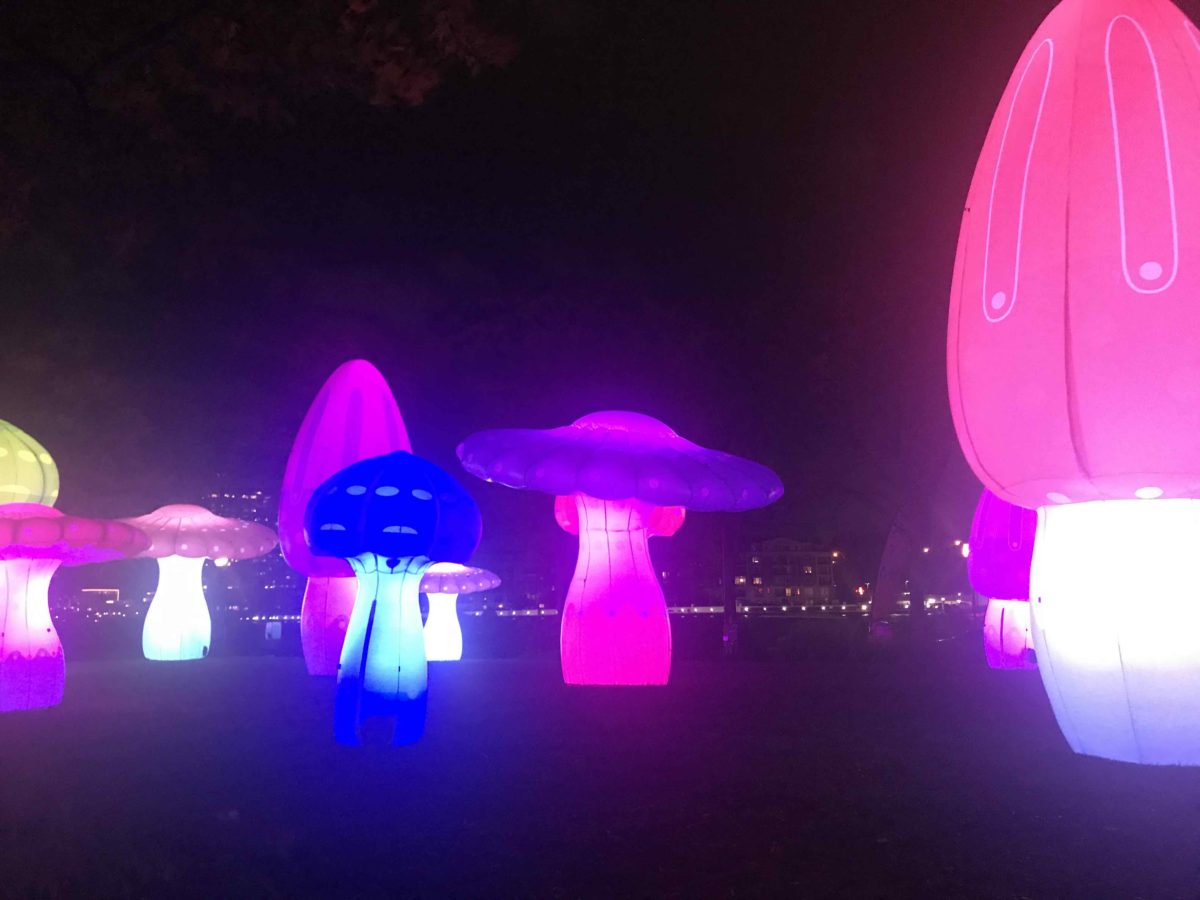Inner Harbor is getting illuminated over the next 10 days, and artists are using innovative techniques to get the audience involved.
Light City returns from Nov. 1 through 10, with 2019 being the first time the light art-centered festival is being held in the fall. Plus, this year it’s being combined with the Baltimore Book Festival for a mega-event that organizers dubbed Brilliant Baltimore.
By moving the date, organizers at Baltimore Office of Promotion and the Arts (BOPA) said the light sculptures will have more time to shine, as the sun sets earlier in the fall. Announcing the new combined event a year ago, BOPA Executive Director Donna Drew Sawyer said the combo would provide benefits “artistically, operationally and financially.”
“Two of BOPA’s major creative initiatives are great on their own, but had the potential to exponentially illuminate each other and have an audacious creative impact on the city of Baltimore,” she said then.
Light art installations appearing this year were chosen from among the 125 applications submitted to BOPA from artists in Baltimore and beyond. On Thursday night, a pre-event walkthrough revealed some of the sculptures that will be on display throughout the event.
One takeaway for this year: Attendees have a big role in shaping the art. Many works are powered by the movements and poses that the public contributes.
Here’s a look at some spots to immerse yourself and get involved:
Between the Lines: Artist Pitaya created an installation that provides a connecting point between the art and water that surrounds it. Floating on the dark harbor water, these fishing rods create an ethereal effect, blurring the lines between land, water and air.

DiscoBug: Combining the disco ball and Volkswagen Bug, Tyler Fuqua created a hand-spun exhibit that forms a showpiece at the prime entrance to Inner Harbor near Harborplace. Pay attention to all the shimmering details, as a look inside the car yields dancing bugs.

Human Tiles brings Baltimore’s 32-story World Trade Center into the fold, delivering a scale we’ve yet to see at Light City. The work from artist Nuno Maya is also interactive. Attendees’ movements are captured in real-time using a video camera. Then, a computer program turns it into a kaleidoscopic projection on the World Trade Center.
Loop: Artists Ekumen and Jonathan Villeneuve teamed on this people-powered exhibit. Using a hand lever, participants dictate the pace of animations and sounds that appear while sitting inside a cylinder. In a boon for participation, there are many to choose from.

MAPP: This project, an abbreviation for Mapping at Private Parties, allows people passing by to become part of the work. AlexP uses a video projector, camera and software to create an abstract likeness of a group. On Thursday, a group of trick-or-treaters struck a pose in front of the wall. When they walked away, a colorful silhouette remained. Three turns later, they remained impressed.

(off)Lines: Artist Pierre Ranzini combines more than 7,000 LEDs and 320 linear meters of square bars with sound to shape one this year’s most geometric offerings. Alongside constantly changing colors and patterns, the familiar late 20th-century sound of a dial-up modem connecting was particularly transporting.

The Canopy: Given that Baltimore is home to a long-running Kinetic Sculpture Race every spring, a bike-powered exhibit feels right at home as part of another local public art event. Artists CAN-DUIT and Pneuhaus joined forces to create a dozen sculptures that rise and fall with pedal power. The thrill of watching the sculpture lift up while pedaling is almost enough to make one forget that they’re getting a pretty good workout to go along with it.

What is the Shape of Water?: Inside the SPARK Gallery at Columbus Center, a collaboration formed at the Institute of Marine and Environmental Technology (IMET) is giving light to tiny creatures that are found in the harbor water. Multi-disciplinary artist Lisa Moren of UMBC and Dr. Tsetso Bachvaroff of IMET started working together in January to create art around bioluminescene, which happens when organisms naturally emit light. Entering a dark room, viewers look above as thousands of dinoflagellates light up through a system that’s activated by the human voice, then triggers audio transcribed from DNA. Moren said the exhibit is an exploration of humans and non-human organisms sharing the same space.

Waterlight Graffitti: Artist Antonin Fourneau invites participants to become the artists in Rash Field. The exhibit uses a tool that relies on water as a conductor of electricity to allow the public to “paint” on a wall of thousands of LEDs.

And don’t forget the drone light show: As we reported earlier this week, Global Air Media is providing Aerial Artistry to kick off the week with drone light shows on Friday and Saturday night. A brief rehearsal showed that there will be plenty of colors and shapes involved.







